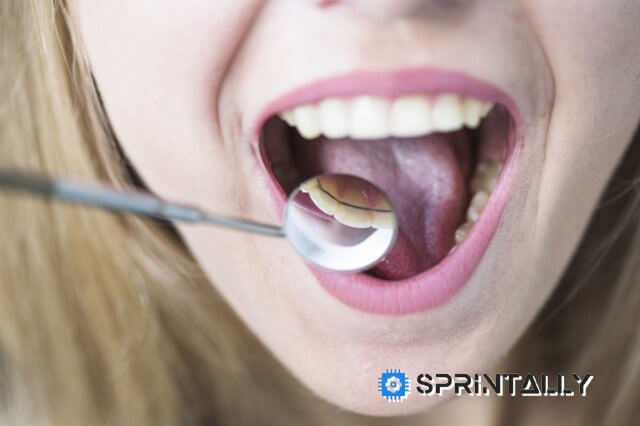Diagnosis in language: how to recognize problems in time

Diagnosis in language: The appearance of the language can say a lot to an experienced specialist. But, it turns out that you can determine your health status by language yourself. And also find out: is it possible to be treated with taste, how and why to clean the tongue. This will require some specialized knowledge.
According to the state of your language, you can independently determine which organs are not in order. Various diseases leave traces on it. Outwardly, they appear in the language in different ways: this is plaque, and redness, and an increase in various zones, the curvature of the fold. Each language zone is associated with a specific organ.
What are the reasons for changing the appearance of the language?

Let's talk about the most common symptoms and problems in the body that they may indicate. A fold, for example, indicates spinal health.
- The curvature of the folds at the tip of the tongue indicates cervical osteochondrosis. Most likely, this is the result of sedentary lifestyle long work with a computer or behind a Desk.
- Bending folds in the middle of the tongue — lumbar degenerative disc disease, they usually suffer professional drivers and people who spend a lot of time behind the wheel.
- Redness of the tip of your tongue — a sign of a weak heart activity beginning on coronary heart disease. About diseases of the pulmonary system can be judged by the changes at the edges of the tongue, towards the tip. The heart and lung disease more often affects smokers, therefore, such changes in the language — a serious reason to quit Smoking.
- Teeth marks on the tongue — a sign of dysbiosis, slagging of the body. In this case, you should change the diet, eat less fatty and fried. To bring order to the body can make different infusions.
- Trembling of the tongue — a manifestation of the neurasthenic syndrome. Here the advice is: try to improve the psychological environment at home, at work, to change their way of life.
- Cracks in the language — you can talk about various diseases of the blood, the endocrine system, pathology of the kidneys. Here we have tested most severely.
- A sign of disruptions in the body — decrease in taste sensations. Language areas are responsible for reactions to sweet, sour, salty, bitter. If the person ceases to feel any of those tastes, then we can talk about diseases of the nervous and endocrine systems.
- Swollen tongue, which looks bigger and thicker than usual, maybe talking about how inflammation of the tissues of the tongue and swelling in the body.
- "Grainy" or "scratchy", the language of the case is increased or thickening of the papillae. If thickened papillae, "grain", localized on the tip of your tongue, you need to pay attention to the heart and to be examined by a cardiologist; at the edges — it's worth checking the liver and gall bladder; the middle part suffers the stomach and intestines.
- "Mirror" language happens when the surface of the tongue becomes smooth and shiny. This happens with anemia, exhaustion or serious illness of the stomach.
- The dry and rough surface of the tongue often happens with allergies.
Color of the disease
A normal tongue looks soft and gentle, its movements are not constrained, the color is pink, and the coating is normally thin, white and moderately moist. With certain diseases, the color of the tongue changes.
- Dark red tongue evidence of probable pneumonia, severe acute infectious disease, high fever caused by infection, ischemia or poisoning.
- Raspberry tongue indicates the same disease and red, but occurring in a more severe form.
- Purple there may be a serious infectious disease, disruption of the circulatory system and respiratory system.
- Thick white coating indicates the delay of food in the intestines, ie about constipation that had not yet become chronic.
- Yellow indicates serious deficiencies. The more intense the color and the thicker the plaque, the more serious the illness and likely permanent accumulation of food in the stomach and intestines.
- Grayish plaque says chronic, quietly flowing diseases of the stomach and intestines. It is also possible dehydration and disturbance of acid-alkaline balance in the tissues and organs (increased acidity).
If you are a lover of strong tea or a heavy smoker - relax! A dense, grayish or yellow plaque on the tongue indicates, rather, not about diseases, but about bad habits. Some products and medicines can also change the color of the tongue.
Taste sensations

Due to the fact that many taste buds are concentrated on the surface of the tongue, we know that cucumbers are salty, sugar is sweet, lemon is sour, and medicines are bitter. It turns out that the tongue is the first to critically evaluate the food that should enter our stomach.
At the same time, different areas of the tongue have unequal sensitivity to various flavoring substances. Usually, the sweet recognizes the tip of the tongue, and the bitter - the region of its root. The taste buds themselves are extremely fragile creatures and without saliva would have long failed. And so, saliva dissolves the dry substances that enter the mouth and excites taste buds.
It also flushes away the rest of the taste from the surface of the tongue, so that we can experience a series of consistent taste sensations in a short period of time. But, most importantly, the protein in saliva has the ability to bind acids, protecting the mucous membrane of the mouth and the taste buds located in it from their harmful effects.
Regrettably, not all of us are able to enjoy the taste. And this happens for a number of reasons. For example, due to frequent burns of the mucous membrane of the tongue, when we hastily throw too hot food into ourselves or fill in a substitute of unknown origin, causing a chemical burn.
A change in taste sensations or their loss can occur as a result of damage to the pathways of the taste analyzer: for example, loss of taste in the front two-thirds of one half of the tongue is associated with damage to the lingual or facial nerve, in the posterior third of the tongue - with damage to the glossopharyngeal nerve. That is why doctors disapprove of the early acquaintance of a child with over-peppered or spicy food, the abuse of which can lead to a distortion of taste sensations.
In some cases, a taste perversion is caused by diseases of the internal organs or metabolic disorders: a feeling of bitterness is noted in diseases of the gallbladder, a sensation of acid - in diseases of the stomach, a feeling of sweetness in the mouth - in severe forms of diabetes.
Taste treatment or taste therapy
This is not a joke at all. As already mentioned, various taste sensations act on the taste buds of the tongue: bitter, sour, sweet, salty. And, it turns out, they act in a healing way! After all, language is the "entrance gate" of an organism. It is saturated with reflexogenic zones, which are associated not only with the digestive tract but also with all organs. Therefore, the impact can be the widest and depends on the type of food.
For example, if you hold on your tongue a little bee honey with butter, you can calm the cough. Sweet foods tame cardiovascular diseases, because sweet tastes contribute to the expansion of blood vessels. Naturally, such therapy is used as an adjuvant, and these diseases cannot be cured only with its help. But it's still worth listening.
If you suddenly have high blood pressure, put something sweet on your tongue: lollipops, honey, any sweets, raspberry jam. And after 5-7 minutes you will feel significant relief. Under reduced pressure, experts recommend holding lemon juice diluted with water in your mouth.

Bitter foods have anti-inflammatory effects, normalize kidney function, and cleanse the body of salts and toxins. In small quantities, bitterness exacerbates mental abilities. However, you should not abuse bitter foods: in large quantities, they cause depression and longing.
The astringent taste stops diarrhea, improves blood coagulation and is therefore used for bleeding, wounds. It is interesting that astringents, depending on the microelements included in their composition, can warm or cool the body.
Acute helps digestion, purifies the blood, kills germs and warms the body from the inside. A salty taste causes thirst and hunger, traps water in the body and has laxative effects in case of constipation.
Doctors say that the language has a huge number of receptors, affecting which you can treat various diseases. For example, for heart diseases, you need to massage the tip of the tongue, for diseases of the respiratory tract - the side surfaces. Massage of the middle part of the tongue is used for diseases of the pancreas, and the root of the tongue for diseases of the kidneys. The middle part of the tongue (closer to the front) is responsible for the activity of the stomach, and its posterior part for the genitourinary organs.
Tongue cleaning
If you face the truth, you have to admit that our tongue looks like a thick plush carpet with bacteria crawling on it. Here, food debris and tiny particles of dead epithelium accumulate. During decomposition, they secrete toxins, are absorbed into the bloodstream and cause bad breath.
It is for this reason that he needs daily cleaning. Moreover, the tongue should be cleaned in the direction from the root to the tip. To do this, an ordinary spoon, not a hard toothbrush or a special plastic scraper that resembles a microscopic mop is suitable. The procedure takes only a minute: 30 seconds in the morning and the same in the evening. It just needs to be a habit.
To clean the tongue, we recommend using rinses with infusions of raspberries, plantain, nettle, and dandelion.
And the last one. Know that a tongue can be considered pure if it is pink, a white coating means that millions of bacteria still live on it.





